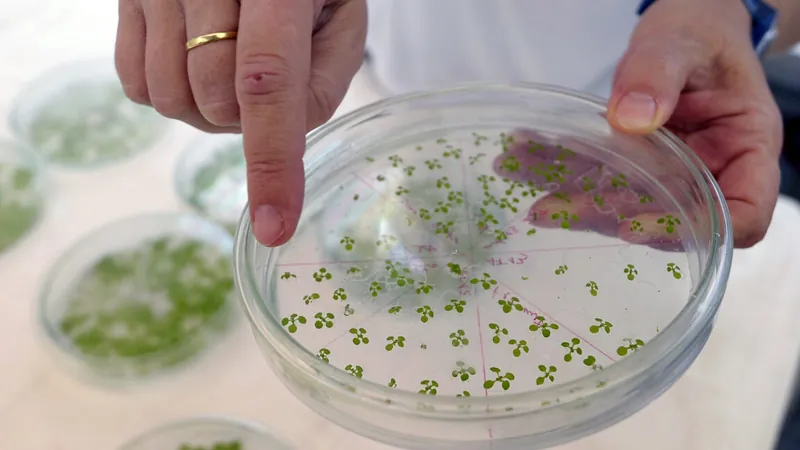
Revolutionary Engineering: Plants Learn to Absorb Carbon Dioxide Efficiently!
2025-09-12
Author: Ting
Imagine harnessing the power of plants to combat climate change by absorbing excess carbon dioxide (CO₂) from our atmosphere! While the dream of widespread reforestation seems ambitious given land constraints, scientists are turning to innovative approaches to boost plant efficiency in capturing CO₂.
The RUBISCO Challenge: Nature's Inefficient Enzyme
At the heart of photosynthesis lies RUBISCO, an enzyme that, while vital for incorporating CO₂, is notoriously inefficient. To address this hurdle, researchers in Taiwan set out to engineer a new biochemical pathway in plants, aimed at significantly enhancing their carbon uptake capacity.
Introducing the McG Cycle: Nature Gets a Makeover
The team devised a novel solution known as the malyl-CoA-glycerate cycle, or McG cycle for short. This groundbreaking method not only allows plants to integrate carbon more efficiently but also produces a two-carbon molecule essential for lipid formation—a crucial component for cell structure.
A Breakthrough in Plant Growth and Carbon Capture!
In laboratory trials, the McG cycle was integrated into the genome of Arabidopsis, a common plant used in research. The results were astonishing: these genetically modified plants displayed a remarkable increase in size, weight, and seed production—up to three times more than their conventional counterparts! Notably, they also absorbed more CO₂ without needing extra water.
Visual Proof: Plants Transform Into Lipid Powerhouses
Using radioactive bicarbonate, researchers tracked the carbon, confirming its transformation into fatty compounds. The imaging revealed that these plants were not just capturing carbon but were rapidly converting it into oils, significantly increasing their lipid stores.
Can These Discoveries Help Our Larger Crops?
Despite these promising results, caution remains. The findings in Arabidopsis may not directly translate to larger crops or trees. Moreover, the lab conditions under which these plants were grown do not necessarily reflect the challenging realities of nature.
A Glimpse Into the Future
While it’s too soon to determine how effectively these innovations will sequester carbon in practical applications, they hold potential for biofuels and other eco-friendly technologies. Ultimately, this pioneering research represents a leap forward, showcasing humanity's ability to rewire biological processes that have been fine-tuned over millions of years!
With every step forward, we get closer to harnessing the planet's natural systems to alleviate the looming threat of climate change. The era of green innovation is here, and the future looks promising!



 Brasil (PT)
Brasil (PT)
 Canada (EN)
Canada (EN)
 Chile (ES)
Chile (ES)
 Česko (CS)
Česko (CS)
 대한민국 (KO)
대한민국 (KO)
 España (ES)
España (ES)
 France (FR)
France (FR)
 Hong Kong (EN)
Hong Kong (EN)
 Italia (IT)
Italia (IT)
 日本 (JA)
日本 (JA)
 Magyarország (HU)
Magyarország (HU)
 Norge (NO)
Norge (NO)
 Polska (PL)
Polska (PL)
 Schweiz (DE)
Schweiz (DE)
 Singapore (EN)
Singapore (EN)
 Sverige (SV)
Sverige (SV)
 Suomi (FI)
Suomi (FI)
 Türkiye (TR)
Türkiye (TR)
 الإمارات العربية المتحدة (AR)
الإمارات العربية المتحدة (AR)